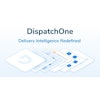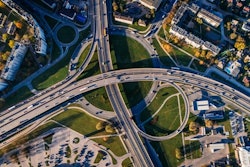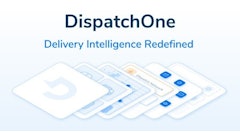
Last mile delivery has reached a staggering 53% of total shipping costs. When implemented correctly, the final steps in the delivery process can improve customer trust and satisfaction, increase flexibility and efficiency, and support sustainability strategies. However, the landscape is becoming increasingly challenging, with retailers heavily reliant on external last mile solutions and many delivery companies struggling to prove their worth compared to industry giants.
With the importance of last mile delivery becoming more prevalent, the costs of failure could be high. So, the question remains–how can the last mile ecosystem deliver on these promises?
Generating Trust
Consumers have unlimited means to shop at their fingertips–from social media to product reviews online, purchase opportunities are finding shoppers where they are, in the moments when they are ready to spend. Coupling this with an unpredictable retail market, loyalty becomes both harder to secure but also increasingly crucial to retailers’ success.
In the age of convenience, delivery services that meet or, better yet, exceed customer expectations, are a sure-fire route to repeat custom. Almost 9 in 10 digital shoppers (88%) believe trust is even more important during times of change, such as the current global economic uncertainty. Accurate tracking information and flexibility–for example, customer shaving access to alternative options if they will not be available to receive a parcel–are vital to ensuring consumers understand the journey their purchases go on to arrive at their door, and importantly, have confidence they will arrive at a time that works for them.
However, building trust means more than retailers setting out their offerings and delivering on them. It means understanding the needs of their client base inside and out. For example, companies that deliver medical supplies seek a higher level of trust from their logistics providers, because customers depend on fast, flexible and efficient services for their wellbeing. A sustainable fashion brand, on the other hand, will need to offer options that prioritize reducing the impact of deliveries on the planet, even if that means a longer wait or higher cost for the customer.
The Power of Flexibility
When faced with the unpredictable nature of the delivery process, businesses need to be agile. Building a strong connection between retailers or e-commerce brands and logistics providers is crucial in achieving this and avoiding delays for customers.
Technology enables a higher level of flexibility, allowing for routes to be adjusted in real-time based on external factors outside the control of logistics providers, such as traffic and weather conditions. The ability to react in the moment, however, requires real-time visibility–something that only 34% of retailers can offer, according to Bringg’s State of Last Mile Delivery report. When the competitive advantage relies on flexibility, retailers need to ensure they have the means to provide this as a priority, making data access and strategy a crucial consideration for the remaining two-thirds of retailers, who are unable to access crucial insights.
Cutting Carbon Emissions
Public awareness of sustainability and climate change is on the rise, prompting businesses to hone in on green initiatives and the communications around these efforts.
Within the last mile industry, these efforts center on route optimization tools. The impact of these tools on reducing fuel consumption and carbon emissions cannot be understated. Through improved delivery times, bulk delivery options, and the ability to integrate real-time traffic information to adjust routes dynamically, the impact of the last-mile can be reduced. For example, congested areas can be avoided by drivers and alternative routes taken, meaning fewer emissions are created from standstill traffic and looped journeys in popular locations are reduced. Automation also plays a key part, as technology can prioritize the use of eco-friendly transportation, such as electric or hybrid vehicles, in the routing process.
The next few decades are hard to predict, with the likes of drones and other autonomous delivery options promising lower costs and green credentials. In the meantime, however, an optimized tech stack will not only help create stronger relationships between retailers and logistic providers but also simplify the complexity around last mile delivery for retailers.
Strong Relationships Elevate Customer Experience
Optimizing last mile delivery has the power to elevate customer satisfaction at a time when businesses are chasing marginal gains and efficiencies. Delivering a smooth product journey from the distribution center to the shopper’s front door can be the difference between a satisfied repeat customer and bad reviews. Maintaining and reinforcing strong relationships between logistics providers and both retailers and shoppers is the only way to achieve this. Businesses that understand and listen to their customer needs, and optimize offerings to meet those needs, will gain the upper hand.
![Pros To Know 2026 [color]](https://img.sdcexec.com/mindful/acbm/workspaces/default/uploads/2025/08/prostoknow-2026-color.mduFvhpgMk.png?auto=format%2Ccompress&bg=fff&fill-color=fff&fit=fill&h=100&q=70&w=100)








![Pros To Know 2026 [color]](https://img.sdcexec.com/mindful/acbm/workspaces/default/uploads/2025/08/prostoknow-2026-color.mduFvhpgMk.png?ar=16%3A9&auto=format%2Ccompress&bg=fff&fill-color=fff&fit=fill&h=135&q=70&w=240)








